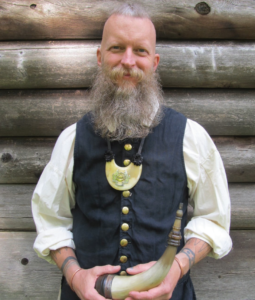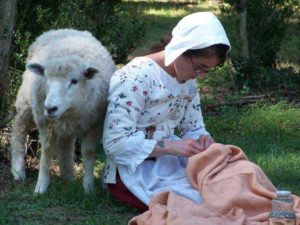Clinton Byers is a North Carolina native. He was introduced to muzzle loading and living history at an early age. In his teens, Clint began making powder horns, shot pouches, and other accouterments for himself and friends. As his artistic skills developed, Clint’s focus turned from just making simply useful items to making historically accurate pieces. Over the last few decades Clint has had the opportunity to study with some of today’s best contemporary artisan in the fields of leather and horn work, and continues to grow and develop his skills in these areas. As an avid flintlock shooter, period hunter, and trekker, Clint enjoys “field-testing” many of the items he creates.

Recognized as an award-winning artist who has sold pieces internationally, Clint has been an accoutrement judge at Dixon’s Annual Gunmaker’s Fair in Kempton, PA since 2015. He is a member of the National Muzzle Loading Rifle Association, The Contemporary Longrifle Association, and is a Master Horner in the Honourable Company of Horners.
Kerry Masarik-Byers is a descendant of recent Irish immigrants. Like many before her, Kerry followed the great wagon road south from New York through the Valley of Virginia and into the Carolina’s. There, she met Clint. Since her childhood Kerry has had a passion for primitive skills, herbal medicine, and weaving. She has made a study of both European and Appalachian weaving techniques and today teaches spinning on the drop spindle, Saxony wheel, and great (or walking) wheel.
Together, these two are Horn and Fiber. Living in a small log cabin near the headwaters of the Yadkin river, in Western North Carolina, they run a small homestead and are raising a family. Their mission is to learn, preserve and teach skills that made life possible 250 years ago on the southern frontier. By continuing to study with various mentors, many hours of research and practical knowledge gained by living, camping, hunting, and gardening in an 18th century manner, these two bring a unique perspective to others through their living history interpretations.